There’s a lot of confusion about the distinction between product roles — namely, product manager, product owner, product marketing manager, and project manager.
The difference between product manager and product designer is no exception. In this guide, we’ll take a look at how these roles fit within the product development lifecycle.
Keep in mind that by product designer, I mean a genuinely product-oriented product person, not just a UI or UX designer. Understanding differences between UI, UX, and product design is a topic for another article.
Table of contents
- The product development lifecycle: 3 phases
- Product strategy (product manager)
- Product discovery (product manager and product designer)
- Product experience (product designer)
- Product manager vs. product designer: Key differences
The product development lifecycle: 3 phases
To better understand the differences between product manager and product designer, let’s recap how products are made. I’ll simplify the process into three phases:
- Product strategy — Establish high-level product vision, strategy, and objectives
- Product discovery — Conduct product discovery to match users’ needs with goals
- Product experience — Create a user-friendly product
A product manager plays a leading role in the first step, establishing vision and strategy. Both roles contribute more or less equally to product discovery, and product designers shine when it comes to building a usable, user-friendly product:
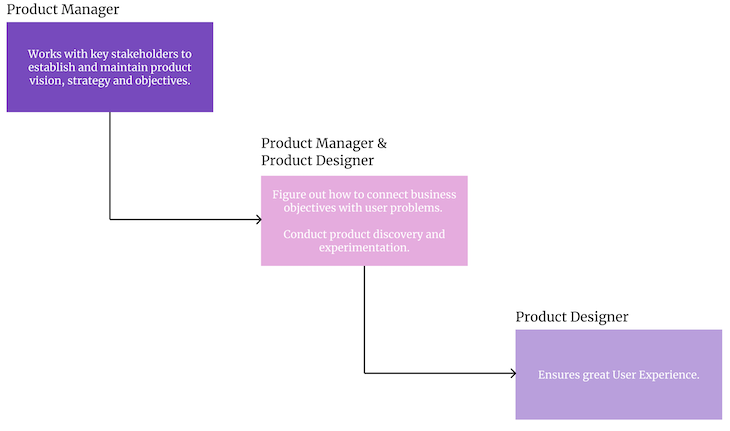
Let’s take a deeper look and examine how product managers and designers contribute to each step.
Product strategy (product manager)
Product strategy is the primary domain of a product manager. The product manager must have a thorough understanding of the:
- Product vision and how it fits the company mission
- High-level strategy to achieve the product vision
- Concrete product objectives that contribute to the product strategy
Product strategy is the heart of product development. Various activities contribute to shaping the product strategy, such as:
Market research
Product managers spend a lot of time on market research.
First and foremost, PMs must understand the target audience and its pains and problems. Doing so enables you to establish a strategy that’s relevant not only to the business but also to users.
This also includes competitive analysis. Good product strategy takes into account the competitive landscape and differentiation strategy.
Understanding trends, market regulations, and economics is also part of market research.
Business planning
We make products to drive business outcomes. A good product strategy reflects that.
This is why product manager spends a lot of time with internal business stakeholders — for example, from marketing, sales, finance, etc.
After all, the product must fit into the company’s business model. It uses the resources the company can provide, utilizes its distribution channels and relationships, and, in most cases, provides revenue to the company. You simply cannot separate a product from the business model.
At the end of the day, a product manager is accountable for positively impacting the business — not for producing hundreds of features.
Organizational alignment
Larger organizations have multiple products. This causes dependencies, cannibalism, and competition for company resources.
PMs must work together to ensure that products are aligned and support each other. Without this alignment, companies would be pulled in many different directions.
In healthy organizations, the whole product team is involved in strategic planning. A product designer also might play a role here. However, the product manager has the last word when it comes to establishing, maintaining, and communicating the product direction.
Product discovery (product designer and product manager)
Product discovery means finding opportunities to connect user problems to business objectives. This is the stage at which you decide what issues to solve with which solution.
To some extent, product discovery is a phase where the product is shaped.
Because product discovery is about connecting strategic objectives with user needs, it requires strong collaboration between product and design.
Among other things, the product phase includes :
Discovering user needs
Both product managers and product designers employ various techniques to gain an understanding of their users:
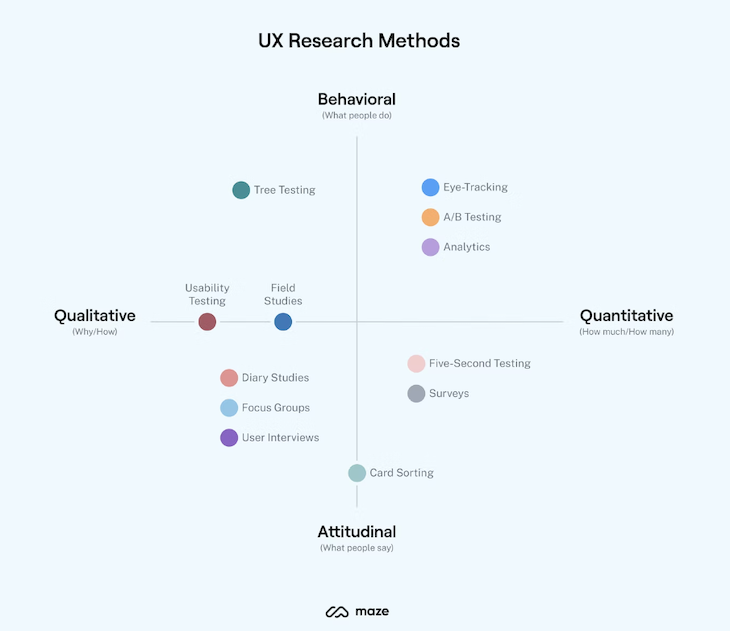
PMs and PDs can collaborate or split and focus on individual research activities. In the end, to build a viable, feasible, and desirable product, they both must have a strong understanding of end-users, including their pain points, needs, and the context in which they use the product.
Mapping opportunities
With both a clear product strategy and information about end users, it’s time to define the product itself.
There is always more than one way to connect user needs and business outcomes. We often call these intersections “opportunities.”
The Opportunity Solutions Tree (OST) is one of the techniques that help to visualize these opportunities:
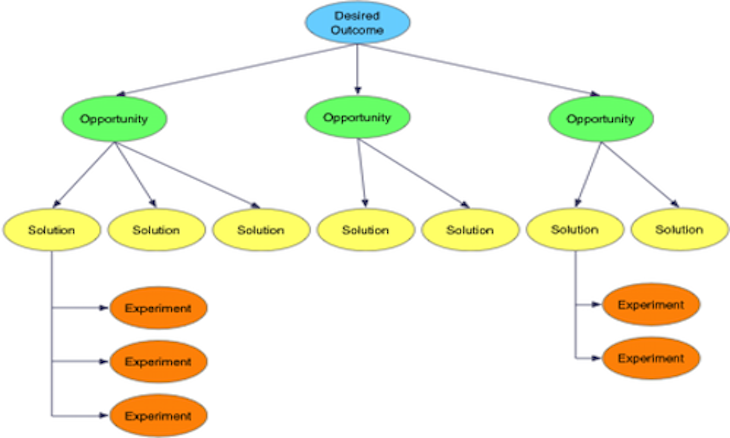
The business acumen of a product manager, the UX expertise of a product designer, and collective user understanding of both are critical to distinguish good opportunities from poor ones, choose adequate solutions, and plan sensible experiments.
This is probably one of the most crucial parts of building a product; it’s where you make fundamental decisions such as what problems to address and what solutions to build. It usually engages multiple people (one person is rarely equipped with enough knowledge and expertise to go through the process alone), and both product managers and product designers are key drivers of this continuous process.
Defining an MVP
You have chosen opportunities you want to focus on and defined experiments and solutions you want to ship to capitalize on these opportunities. Now it’s time to specify the nitty-gritty details of an end solution.
Defining an MVP is a tricky process. On the one hand, you want it to be as small as possible. On the other hand, too rudimentary an MVP won’t help you validate your assumptions and might even alienate your customers from the brand.
For this stage, you need a product manager and a product designer because you need both business and UX expertise.
Try to make your MVP as small as possible by continuously asking yourself:
- Will removing X negatively impact our business?
- Will removing X negatively impact our users?
- Will removing X negatively impact our goals?
Keep going until you define an MVP that’s small yet viable and desirable.
How, exactly, you split the work depends on a particular context. Sometimes, product managers and product design work in close tandem; other times, they perform slightly separate activities and align frequently.
In different organizations, different people might be accountable for different elements of discovery. One thing remains constant: you need both hats for healthy product discovery.
Product experience (product designer)
After establishing a product strategy and discovering the best ways to follow it, it’s time to build an actual product.
However, before the team can start coding, they need to know what exactly to code. This is where a product designer comes into play.
There’s more to building a great product experience than just mocking up some nice-looking graphics in Figma. In a well-designed product, everything is intentional, from the color and position of a button to the page structure.
The exact scope of the product designer’s activities depends on the company’s design structure. Sometimes, a product designer is also a full-stack UI/UX designer. Some companies differentiate between product designers and interaction designers. More mature teams might even have separate information architects, UX researchers, etc.
At a high level, the scope of activities includes:
Wireframes and mockups
Product designers use their user experience and usability expertise to lay out the application plan. They give directions on where to put information, buttons, etc.
Small changes in a screen structure might have a tremendous impact on the overall perception and ease of use of the product, and product designers know exactly what to watch out for:

Product designers are also aware of various psychological effects and biases. They plan the product in a way that ethically exploits these phenomena.
Depending on the team, sometimes product designers deliver a rough, black-and-white wireframe; other times, they turn in a fully-fledged, implementable UI:
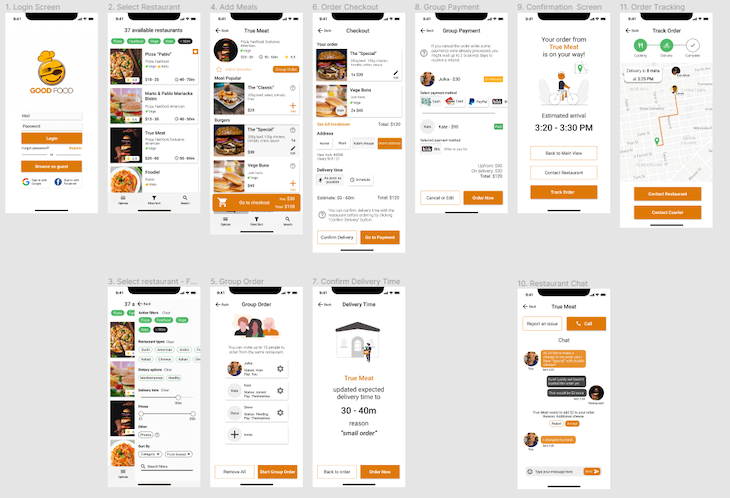
Information architecture planning
Most products contain tons of information. Think about a typical e-commerce site, which might contain information as varied as:
- Products
- Categories and subcategories
- Promotions
- Product reviews
- Seller reviews
- Delivery options
- Payment options
- Testimonials
- Contact forms
- Return policy
- Guarantee information
- Terms and conditions
- Account information
- Past orders
- Current orders
- Notifications
…and that might be just the tip of the iceberg.
How it is that we’re able to navigate these sites seamlessly without getting overwhelmed?
That’s because a product designer spent countless sleepless nights researching, planning, testing, and iterating on various ways to connect this information into a cohesive whole. This is called information architecture:
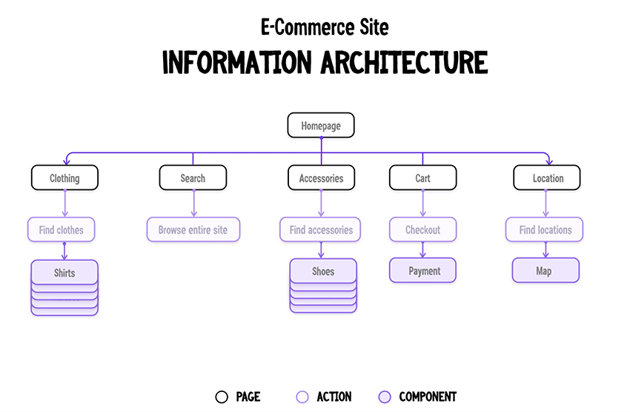
You can think of information architecture as a hierarchical map of the site or app. Based on research, it groups similar categories while hiding less relevant information under easily findable sections. Information architecture helps end users intuitively find things they are looking for.
Without information architecture, it would take you so much longer to find the information you need on a given site. More realistically, you would throw your keyboard out of a window after a few unsuccessful searches.
Usability testing
Usability measures how easily a user can achieve their goals using the product.
Highly usable products feel like a breeze: you achieve the desired outcome without any friction or problems. On the other end of the spectrum, a product with usability issues is unintuitive, buggy, and simply not enjoyable to use.
To build a highly usable product, build the first version with the best intentions in mind, then test it with users and iterate. While there are general best practices, different products target different users in different contexts and thus require different solutions. Rapid experimentation is the only way to achieve high usability.

Product designers are usually the ones that plan, conduct, and analyze tests with end users. They are laser-focused on making the end product as frictionless as possible.
Product manager vs. product designer: Key differences
Product managers and designers collaborate closely to ship great products, and it’s challenging to deliver a product without one or the other.
Although the exact mix of responsibilities and accountabilities varies, in general, product managers focus more on a product strategy while product designers focus on primarily on the user experience.
Both roles play a fundamental role in the product discovery process; you need both perspectives to shape the product direction properly:
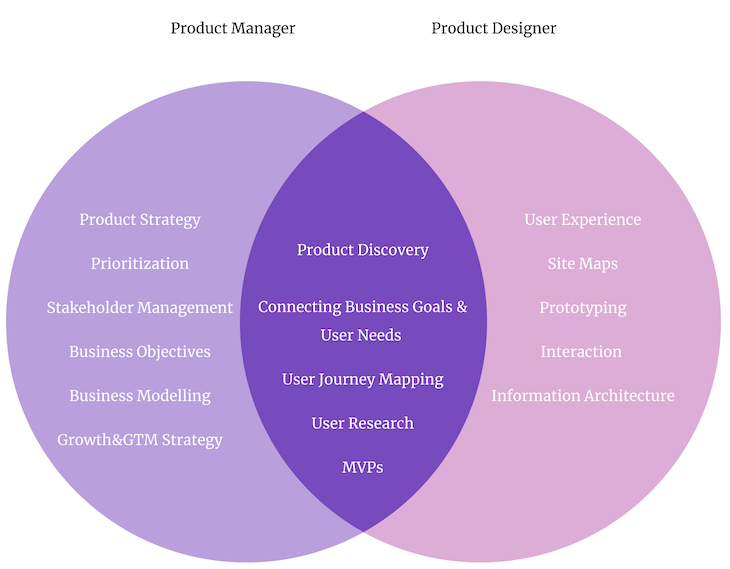
At the end of the day, it doesn’t matter much who does what; the product manager and product designer are part of an interdisciplinary product team.
PMs and PDs have the same goal: to ship a fantastic product that connects user problems and business objectives. How, exactly, they achieve that is secondary. After all, that’s what self-organization is all about.
The post Product designer (PD) vs. product manager (PM): What’s the difference? appeared first on LogRocket Blog.
from LogRocket Blog https://ift.tt/3KWQ9Hu
Gain $200 in a week
via Read more



